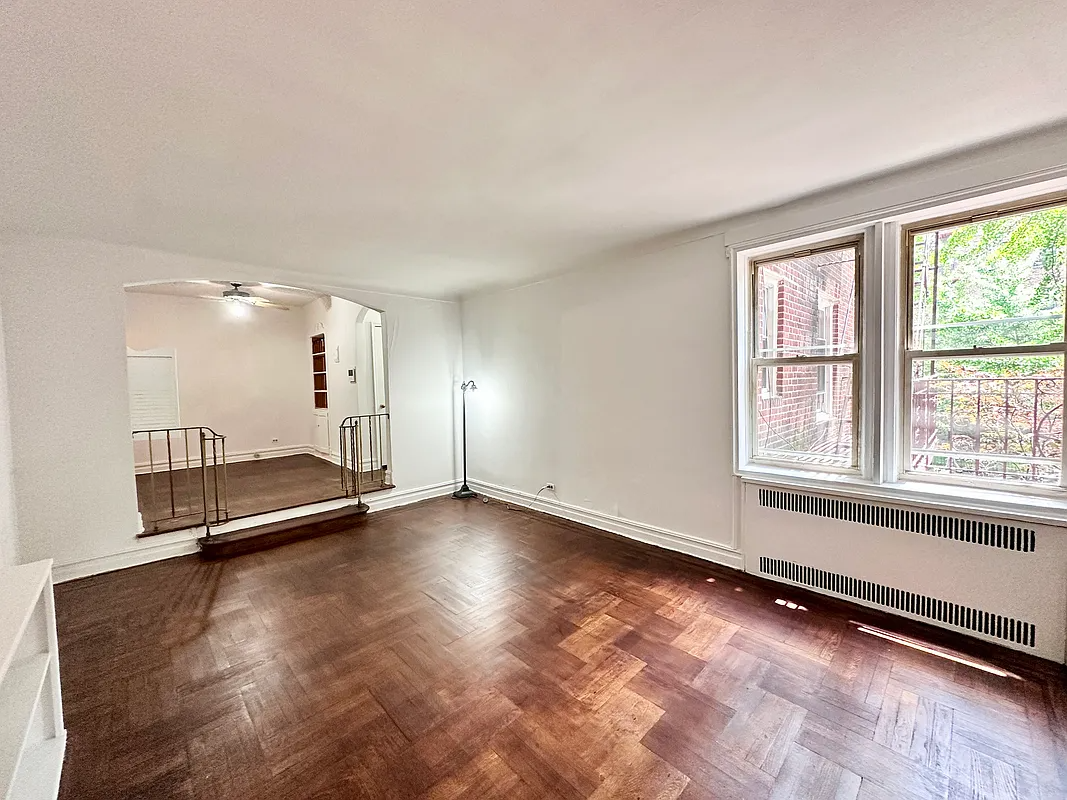Monday Links
Murray Handwerker, 89, Dies; Made Nathan’s More Famous [NY Times] Demolished Coney Arcade to Rise Again [BK Paper] Blaze in Illegal Bushwick Hotel Kills 2 [NY Daily News] ‘Brooklyn’ 34th-Most-Popular Girls’ Name [NY Post] Debate Over P.S. 9 Co-Location Plan [PH Patch] Hotels Check Into Boroughs [Crain’s] 44 Berry Sells for $27M [TRD]


Murray Handwerker, 89, Dies; Made Nathan’s More Famous [NY Times]
Demolished Coney Arcade to Rise Again [BK Paper]
Blaze in Illegal Bushwick Hotel Kills 2 [NY Daily News]
‘Brooklyn’ 34th-Most-Popular Girls’ Name [NY Post]
Debate Over P.S. 9 Co-Location Plan [PH Patch]
Hotels Check Into Boroughs [Crain’s]
44 Berry Sells for $27M [TRD]





just a few more facts:
it is actually cheaper to run more than one school in one space. positions like janitors and security guards are very expensive, union positions with benefits, and sharing the cost of those kind of employees saves schools hundreds of thousands of dollars a year. and there are many other such costs that are shared. additionally, many co-located schools apply jointly for grants, which they have far higher chances of winning when they are doing it together (ps20 and A&L jointly got $375,000 worth of capital improvement grants last year alone)
also, the co-locations only happen in buildings where the residing school is not actually filling all of its allotted seats – what people dont seem to realize that if a single school does grow to capacity it will have the very same space issues that exist when 2 schools share the space – i.e. shifts for lunch and recess, gym and library, etc. my friend who is an assistant principle in a small alternative public school in manhattan says they like sharing space because then the DOE doesn’t breath down their necks to increase class size and grow the school. the school is in downtown manhattan and he has kindergarten classes with under 20 kids in it!
Idisagree, Ps 9 won. In the same type of battle, ps 20 lost. Community Roots I don’t know a lot about, as its location and relationship with the school in its building always made me too queasy to look into it as an option. My issue? Yes, totally.
But Idisagree, I think you and Lothar are correct, as far as it goes. I just think the situation is extremely problematic. And depressing. I wish, instead of sniping over space, parents could unite to demand that the DoE stop putting them in this position. Simplistic? Maybe. I never said I had answers, only that I think it’s important that we ask the questions. And when we’re advocating for our children, remember there are other kids involved too. It can’t be cheaper to run more than one school in one building.
since 2000: as between ps9 and BECCS, who is more affluent? and who “won”? and it’s really not about that – it’s about the DOE’s unilateral move toward charter expansion and co-location regardless of what’s going on in the particular charter or the particular zoned school. it’s about forcing the DOE to follow its own policies, to develop ones that assure equity, and not to squander precious resources (like organically improving local schools) in the reckless pursuit of “reform.”
although CRCS pulled back on its own, i think those who opposed the co-location would consider that a “win” (to use your word). a decent part of the argument against some of the co-location proposals is that they hurt the local schools while simultaneously failing to provide the charter schools what they actually need to thrive.
if CRCS saw this and pulled back is actually great for the discussion, and a testament to their leadership.
i think you and i probably agree on a lot of this stuff, but i also think we have to be careful not to try to simplify what’s going on if we want to get to some thoughtful solutions.
heather, i don’t think anyone is debating that – because it’s not useful and it’s not the point! everyone understands that parents want the best for their kids. this is an argument concerning how the government should balance competing needs where resources are scarce and this is an argument with the DOE, not with other parents.
what you seem to be saying is that where a person comes out on these issues is totally driven by hypocritical self-preservation. i don’t think that’s true and i notice you haven’t bothered to lay out any kind of case for that, or to debate any of the substantive points i and LafCH made.
there are many, many social systems that are premised on the need and ability to argue for different outcomes in situations that have similarities. it’s sad that you seem to be suggesting that we ought to stop trying to make decisions based on a serious and searching inquiry of the actual underlying facts, especially when the consequences are pretty major.
I think you can take this even farther by adding in the comparison of PS 67/CRCS. It does seem that in each case, the school that is more affluent is the one that wins the co-location battle–though in the case of CR, they pulled back after realizing they would lose some of their own classroom space to a new middle school. I do agree that parents’ concerns about whether the interim principal would be allowed to stay had something to do with its lack of support in the neighborhood, as did its current enrollment of children from less affluent and minority families.
All of these battles are heartbreaking, working against strong neighborhood schools that can provide a real anchor in a community.
On the contrary, Lothar, I think the reasons you list are why we should compare the schools, because, while your argument is well-reasoned and probably correct, it leaves a bad taste in my mouth. And I don’t think I’m alone in this.
There are kids in district 13 that BECCS would serve, just as their are kids that a larger middle school for A&L would have served. Everyone in this is out for what’s best for their own kids — my only point is, it would do some a world of good to recognize that their opposition wants exactly what they want — a good education for their kids.
I found Benson’s post hilarious. I think MM and Bxgrl dislike him because he does not back down and typically wins debates with them. Hence, when they see an opportunity to smear him, they jump.
heather, its not black and white, you have to take each situation on a case by case basis.
A&L was an existing middle school in the location, already successfully serving exactly the community where it is located. and while PS 20 does have a promising interim principle, she is in no way a sure thing to become permanent, (especially now with the former principle keaton having been cleared of charges) and the school itself has been through a lot, not the least of which a precipitous drop in enrollment over the last 7 years (lost half its students in that short a period of time) and the fact that only 30% of the kids actually zoned for ps20 go there – those facts dont make a clear argument that the school is going to suddenly turn around and be able to serve the community it is supposed to serve. on the other hand, ps9 has 40% more students currently enrolled than ps20, and no recent drop in enrollment, (quite the opposite its increased its student numbers) which shows good evidence of the likelihood of ps9 being able to retain students, even through middle school. BECCS doesn’t currently serve the community where they are slated to move, which is a huge issue, and the space sharing proposal was so flawed that the PEP decision was overturned, which is a rare occurrence. and just for the record, BECCS is charter and A&L is not – not that it makes a difference, as each school should be judged for itself in my mind, but lets just get the facts straight. these are a few reasons I think you cant compare the two scenarios very successfully. case by case.
I don’t know how to answer your last question. As far as I can see, the two neighborhoods have very similar demographics, so there’s no systemic reason that one of the zoned schools could be expected to get more press than another on the basis of “power” or access. I think the difference can probably be accounted for the increasing prominence of educational issues in the media (see: Waiting for Superman, anti-union fomenting, LIFO debates, etc.) and the fact that a lot of people are farther along in the learning curve on these issues now, and PS9 got the benefit of that.
Also, if I had to guess, there were more zoned FG parents who were ambivalent or directly in support of A&L. I could say that this reflects the perception that A&L had more to offer the community than BECCS has to offer Prospect Heights. I don’t think it has to be hypocritical to make this conclusion.
I do want to point out, though, that PS9’s first appeal was put together by parents, some of whom were lawyers but not in the educational field. It’s only now – after the parent team had a pretty amazing success – that lawyers seem to be “lining up.”